Friday, May 12th 2017

Microsoft Announces New Fall Creators Update With Fluent Design System
After announcing its plan for a new, six-month update cycle for Windows 10, which Microsoft is treating as the last, monolithic release of Windows, the Redmond company has now announced its plans for the forthcoming Fall Creators Update (aherm) update.
Microsoft also announced the adoption of a new, Fluent design language, which strikes me as aesthetically pleasing, and a far cry from the Metro interface we've been saddled with since Windows 8. It carries on the bold color schemes, but marries it with a more subdued, less in-you-face style of user interface, and is supposed to encourage developers to design their apps in a way that makes sense on a variety of platforms - which, considering the advent of the Universal Windows Platform, makes all kinds of sense, doesn't it?The Fluent Design System will focus on five hallmarks of design: light, depth, motion, material, and scale. Light will help users to know what they should focus on in an app (kinda like those lighting design cues we get in our own video games, right?); depth shows the relations between various interface elements; motion will work towards emphasizing events or actions; material invites users to touch the app probably with different texturing on interactive elements; and scale will help interfaces make the shift from 2D to 3D with Windows Mixed Reality (which Microsoft is positioning as one of the biggest new things for the future.)Microsoft if also introducing the Microsoft Graph, which is a timeline of sorts (like a Continuum of your time, eh) which is supposed to more tightly integrate your work across devices with your Windows experience. This means that so long as you possess a Windows system, it will more easily integrate with your other devices. Some features in this Microsoft Graph are:
Timeline, where you can jump back in time to find what you were working on at a given time-frame;Pick Up Where You Left Off, which empowers Cortana to know and transmit your last piece of work across devices should you so choose, kind of like updating a file on Dropbox, I'd wager;Clipboard, which will duplicate information on your transfer area across your devices, in a cloud-powered way; and OneDrive Files on Demand, which seems a little like magic in that it "allows access to your files in the cloud without having to download them and use storage space on your device." Even online files can apparently be seen in File Explorer and accessed on-demand whenever they are needed.Finally, Microsoft is introducing an entire new image and video editing app, dubbed the Windows Story Remix, which automatically stitches and animates your memories (read, your files), or even your friends' photos and videos, together, creating stories with a soundtrack, theme, and cinematic transitions. This is done automatically, though you can expect to have some user control over this. Microsoft is also integrating mixed reality by adding 3D objects to your photos and videos to tell stories in a whole new way, or turning your photos and videos into your own canvas, to be drawn on with Windows Ink.
Source:
Blogs @ Windows
Microsoft also announced the adoption of a new, Fluent design language, which strikes me as aesthetically pleasing, and a far cry from the Metro interface we've been saddled with since Windows 8. It carries on the bold color schemes, but marries it with a more subdued, less in-you-face style of user interface, and is supposed to encourage developers to design their apps in a way that makes sense on a variety of platforms - which, considering the advent of the Universal Windows Platform, makes all kinds of sense, doesn't it?The Fluent Design System will focus on five hallmarks of design: light, depth, motion, material, and scale. Light will help users to know what they should focus on in an app (kinda like those lighting design cues we get in our own video games, right?); depth shows the relations between various interface elements; motion will work towards emphasizing events or actions; material invites users to touch the app probably with different texturing on interactive elements; and scale will help interfaces make the shift from 2D to 3D with Windows Mixed Reality (which Microsoft is positioning as one of the biggest new things for the future.)Microsoft if also introducing the Microsoft Graph, which is a timeline of sorts (like a Continuum of your time, eh) which is supposed to more tightly integrate your work across devices with your Windows experience. This means that so long as you possess a Windows system, it will more easily integrate with your other devices. Some features in this Microsoft Graph are:
Timeline, where you can jump back in time to find what you were working on at a given time-frame;Pick Up Where You Left Off, which empowers Cortana to know and transmit your last piece of work across devices should you so choose, kind of like updating a file on Dropbox, I'd wager;Clipboard, which will duplicate information on your transfer area across your devices, in a cloud-powered way; and OneDrive Files on Demand, which seems a little like magic in that it "allows access to your files in the cloud without having to download them and use storage space on your device." Even online files can apparently be seen in File Explorer and accessed on-demand whenever they are needed.Finally, Microsoft is introducing an entire new image and video editing app, dubbed the Windows Story Remix, which automatically stitches and animates your memories (read, your files), or even your friends' photos and videos, together, creating stories with a soundtrack, theme, and cinematic transitions. This is done automatically, though you can expect to have some user control over this. Microsoft is also integrating mixed reality by adding 3D objects to your photos and videos to tell stories in a whole new way, or turning your photos and videos into your own canvas, to be drawn on with Windows Ink.

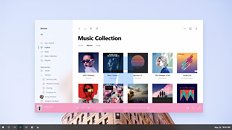
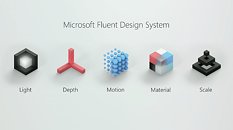
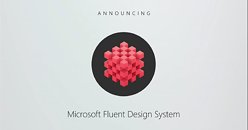
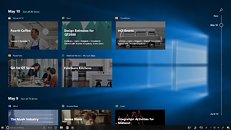

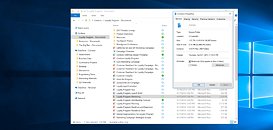
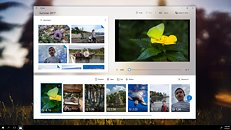


15 Comments on Microsoft Announces New Fall Creators Update With Fluent Design System
Read2:If you dont have any friends, well good luck with that... :eek:
Some of this looks like more ways for Microsoft to catalogue and file away private aspects of peoples lives. That aspect is just not ok..
For example, avast! Antivirus does this as well (like all these days). Partially for the needs of the cloud and partially to proactively spot problems with installations. They are very transparent about it and they also give you control over data collection. CommunityIQ system is required to obtain max protection and also make everyone else benefit from it because every computer acts as a sensor. You can of course uncheck it and disable functionality, but you then also sacrifice some protection. And they also have a second checkbox which dictates whether you allow sharing of data with 3rd parties. For example, I have CommunityIQ enabled, but I always disable 3rd party data sharing. I know they strip the data of any recognizable things, but still, I feel comfy sharing potentially private data with them, but I'm not willing to allow it to be shared with anyone else.
This is where Microsoft is lacking transparency. When you look at their telemetry connections, they go all over the place of which it ends up god knows where. And I don't recall them every explicitly stating where and how data is sent and processed EXACTLY. They probably mention some in EULA which no one ever reads anyway coz it's a stupid block of text, but they don't go into specifics and people want to know those specifics in an understandable form, not that lawyer cryptic form of EULA.
Windows Defender also re-activated itself, even if I have another Antivirus installed.
WTF Microsoft?!? Only idiots on that company??
Thanks for the tip.